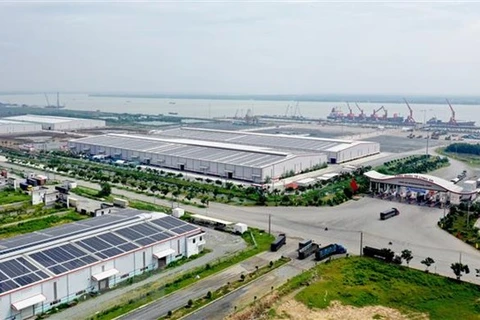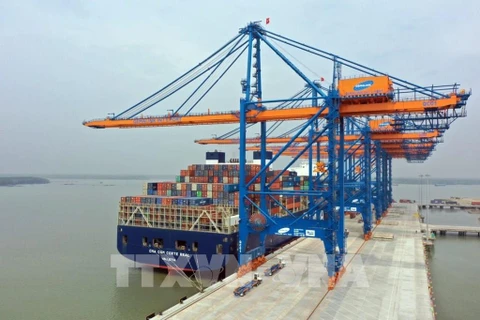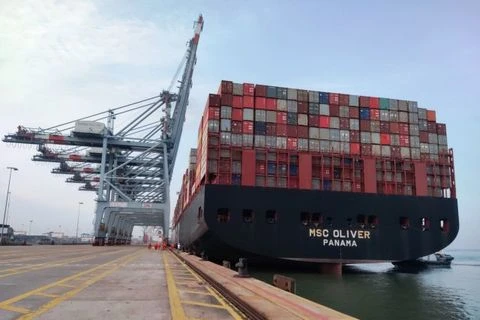Hanoi (VNA) - Some exporters have complained about surge in shipping rates, saying this makes it hard for them to book ships and find empty containers for packing.
With international shipping market being completely dependent on foreign shipping liners, import-export businesses in the country are facing many difficulties due to hikes in freight rates and surcharges for renting empty containers, especially for long haul routes.
Vietnam enjoyed its export growth rate of 5.5 percent in 2020 and this was a positive highlight at a time when global manufacturing and production dropped sharply due to Covid-19.
According to a report by the Association of Seafood Exporters and Producers (VASEP), foreign shipping liners have increased their freight rates by 2-3 times, even 6-7 times for some routes, but businesses still cannot book vessels and containers.
Meanwhile, enterprises supplying seafood materials from abroad cannot rent ships to deliver raw materials to Vietnam for processing.
Maritime administration to inspect shipping rates hike
The Vietnam Maritime Administration (VMA) had planned to set up a working group to inspect the hike in freight rates among shipping companies that have routes to Europe and America.
Deputy Head of the Vietnam Maritime Administration Hoang Hong Giang said the move aimed to remove difficulties for export activities and ensure transparency in the listing of freight prices.
Giang attributed the price hike to the strict border controls and limited trade activities during the prolonged COVID-19 pandemic.
The increased demand led to an imbalance between the volume of goods exported and imported from October 2020. In 2020, the volume of export containers increased, up 13 per cent over the same period last year, reaching 7.38 million twenty-foot equivalent units (TEUs), while the volume of imported goods increased 8 per cent, reaching 7.27 million TEUS.
During the last three months, freight rates had soared to 8,000 USD even to 10,000 USD in certain cases, from less than 1,000 USD at the beginning of 2020. It has sharply driven up expenses for exporters and raised concerns over a lack of transparency and inadequate price management of containers, he said.
As many as 90 per cent of Vietnamese enterprises inked import contracts with the CIF (cost, insurance and freight) condition, and export contracts with the FOB (free on board) condition. Under these contracts, foreign partners were mainly responsible for shipping phases. However, due to the increased rates, the foreign partners required Vietnamese enterprises to share the added cost, he said.
In order to remove difficulties for shipping, VMA had directed the port authorities to co-ordinate with State management agencies at seaports to speed up the procedures for ships entering and leaving ports, facilitating large-tonnage ships to enter and exit, requiring seaport enterprises to increase their operational efficiency, make the most of their resources to release ships quickly and prevent delays in the cargo handling process.
Regarding the listing of prices, VMA had issued a document requiring shipping companies to strictly list their charge rates publicly and transparently, increasing prices in accordance with the provisions of law.
VMA had proposed the Ministry of Transport to co-ordinate with the Ministry of Industry and Trade and the Ministry of Finance to set up a working group to inspect the increase in freight rates and surcharges of shipping lines that have routes to Europe and America.
Despite the impact of the COVID-19 pandemic, the volume of goods exported and imported overseas still saw stable growth. However, in the last months of 2020, import-export businesses faced many difficulties due to rising sea freight rates and a lack of empty containers../.

























